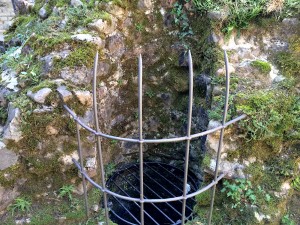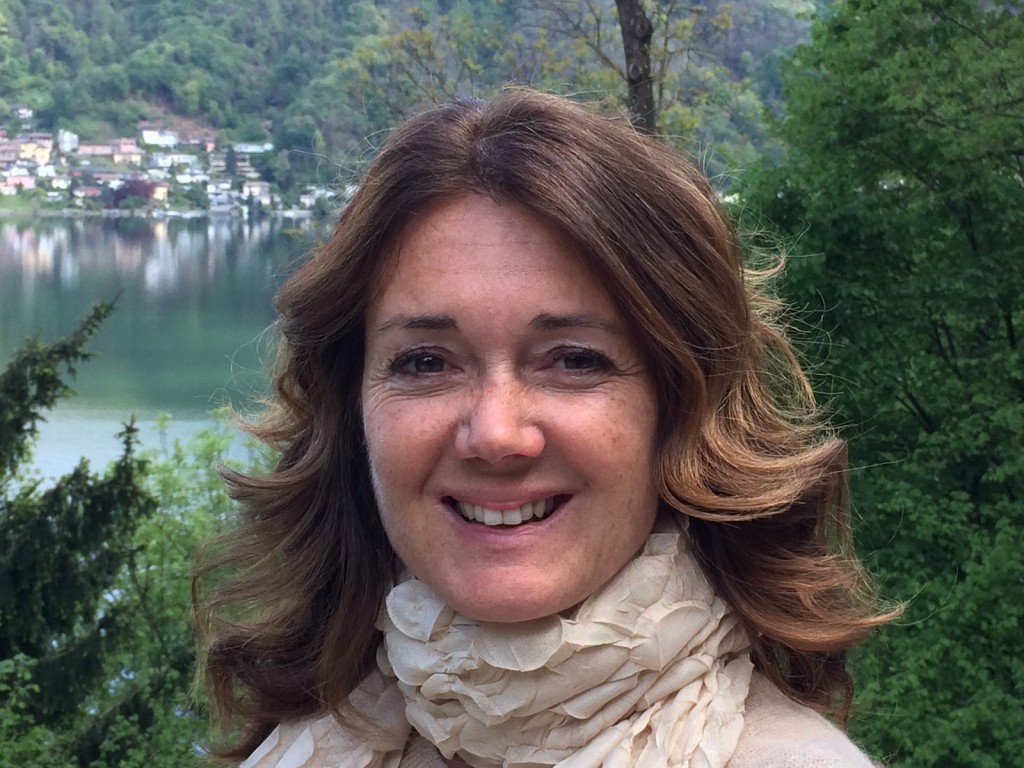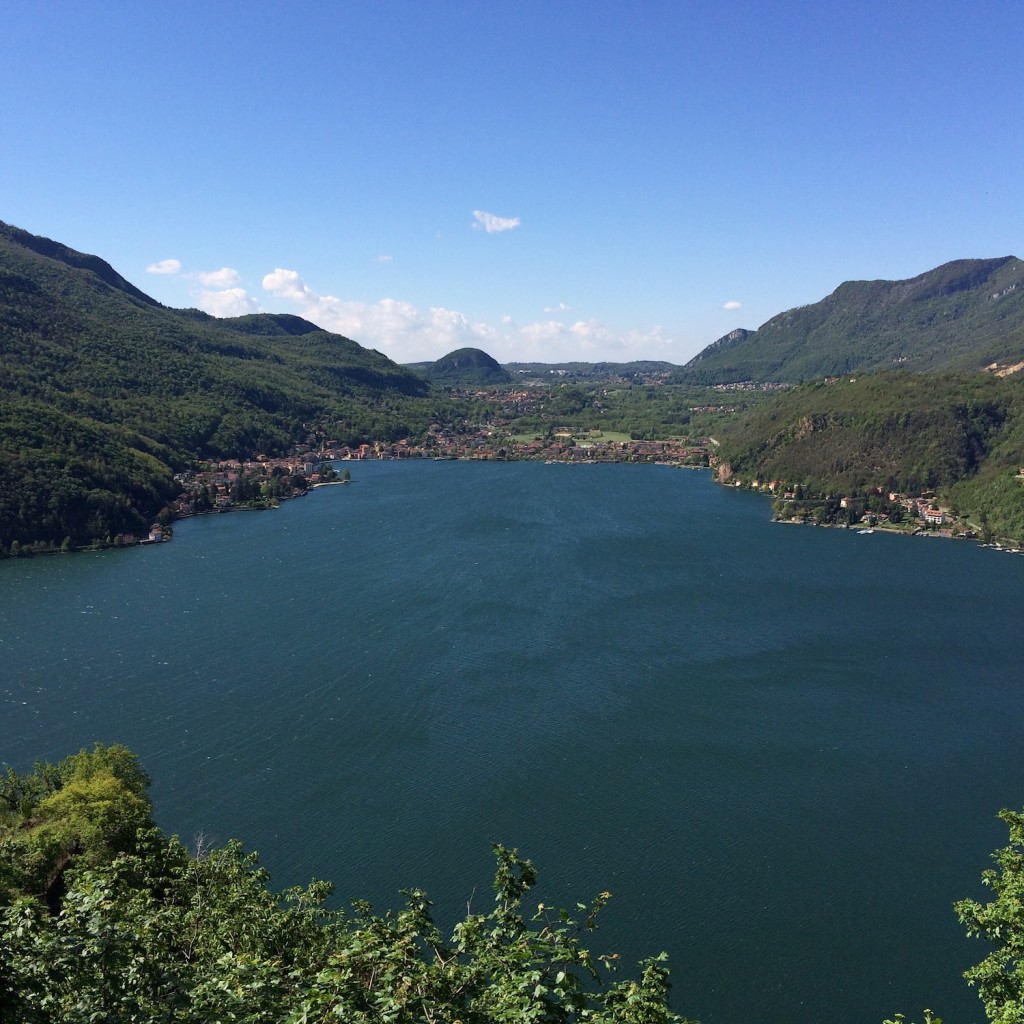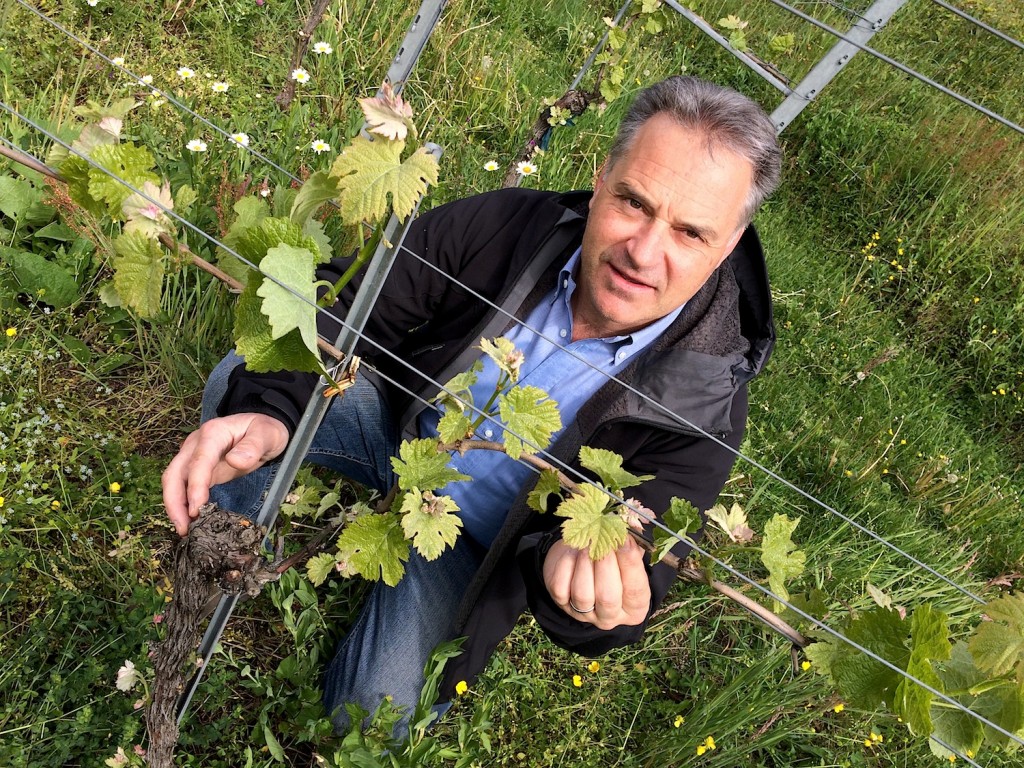This is Gaby Gianini the owner of Castello di Morcote, and although those names will be unknown to most readers I am convinced that this place is one of the world’s great Cru for red wines from the Merlot grape. I call it “Anti-Petrus”, because Chateau Petrus in Pomerol/Bordeaux – the most famous Cru in the whole world for Merlot-based red wines – is almost flat and has a heavy clay soil that retains a lot of water, whereas Castello di Morcote’s vineyards are on steep slopes with a weathered porphyry soil that retains very little water. The contrast could hardly be more striking, but it goes much, much further than these facts, however fundamental they are for the business of winegrowing.
Due to their location on the plateau of Pomerol from the vineyards of Petrus you can barely see beyond the immediately neighboring properties where the vineyards look much the same. “Dull” was the first word that occurred to me when trying to describe this location. And no, I’m not anti-Bordeaux, for example, the nearby town of St. Emilion and the surrounding vineyards are stunning in comparison. Castello di Morcote stands on an isthmus projecting into Lago di Lugano from which the views are truly spectacular. On three sides of the property lie the waters of the lake lie and, depending which way you look from which location on the property, you can see for somewhere between several miles to some tens of miles. Most of what you see is densely forested hill country that is unchanged since thousands of years (see below). I know of no other vineyard location in the world exactly like this, although the bluff of Keuka Lake in the FLX of Upstate New York kind of resembles it.
Then there’s the architecture. The Chateau at Petrus is little more than a 19th century farmhouse, and it still looks like that although a great deal of money having been poured into making it look grander (and avoiding some taxes). In contrast, Castello di Morcote is a massive fortress dating back to around 1450, and although it is partially in ruins this only adds to the impressive effect. However, the age of this place is much greater than the fortress you see when you arrive, for it was built around the remains of a Roman tower that are still visible (the Roman well is pictured below).
 I’m going to stick my neck out a considerable distance and say that there’s no department in which Morcote lags behind Petrus except in wine prices, although it does that by a huge margin: the latter is one of the most expensive wines in the world. Morcote costs between 5% and 10% of the price of Petrus depending on the vintage (for the latter). Of course, the statement of with which this paragraph begins means that I consider the red wine from Castello di Morcote to be remarkable and extraordinary. In my opinion, since the 2011 vintage it has joined the L’Apparita of Castello di Ama in Chianti Classico as one of the two most elegant Merlot red wines in the world. They both come from high altitude vineyards with rocky soils that are not only a great contrast to Chateau Petrus, but also to the almost flat vineyards with loam-based soils from which Masseto (Italy’s most famous and expensive Merlot red) is produced in Bolgheri on the Tuscan coast.
I’m going to stick my neck out a considerable distance and say that there’s no department in which Morcote lags behind Petrus except in wine prices, although it does that by a huge margin: the latter is one of the most expensive wines in the world. Morcote costs between 5% and 10% of the price of Petrus depending on the vintage (for the latter). Of course, the statement of with which this paragraph begins means that I consider the red wine from Castello di Morcote to be remarkable and extraordinary. In my opinion, since the 2011 vintage it has joined the L’Apparita of Castello di Ama in Chianti Classico as one of the two most elegant Merlot red wines in the world. They both come from high altitude vineyards with rocky soils that are not only a great contrast to Chateau Petrus, but also to the almost flat vineyards with loam-based soils from which Masseto (Italy’s most famous and expensive Merlot red) is produced in Bolgheri on the Tuscan coast.
This is all down to the vision of Gaby Gianini who was convinced that her family property was capable of producing special wines when she took over responsibility for the vineyards and winemaking in 2009. In Michele Conceprio (pictured above) she has found an ideal oenologist for this project, not only because he has great experience growing Merlot around the Lago di Lugano, but also because he is fanatical about turning vineyards into complex eco-systems through bio-dynamic methods. It has been this and more rigorous selection of the grapes used for red wine (the property also makes interesting dry whites based on Merlot) that have moved quality up and up since 2009. Already the 2011 wines (the current vintage) have the dry elegance and subtle fragrance that is Gianini’s goal, but the 2013s take this a step farther having even more energy (that which Merlot generally misses), and the 2015s that are still in barrel are sensationally expressive and unbelievably vibrant considering how hot last summer was.
The idea of Cru, that is of unique locations in each of which a particular type of wine achieve both a remarkable quality and a high individuality of flavor is not new, although it is less old than is commonly supposed (it very rarely goes back much more than 300 years). However, this idea is often only applied to a few select regions, as if in the distant past the Great God of Wine had written in stone that terroir could only exist in a handful of places. In fact, the way the Cru idea has spread very considerably during the 30 plus years of my career, most obviously in the German-speaking world, but also, for example, in Piemont. Back in the 1970s there were very few single-vineyard Nebbiolos from that region and they were often considered oddities. Since then there has been a great blossoming of the culture of single-vineyards in Piemont. I am sure that this will also happen in the region that is Castello di Morcote’s home.
Where is that? Although the names are all Italian, it is just the other side of the border in the Italian speaking Swiss province of Ticino. Yes, I’ve been talking about a Swiss wine the whole time! And how could a Riesling lover get so excited about Merlot of all grapes, because here too are elegance and vitality, subtle aromatics and a balance that draws me back to the glass again and again.




![120114_riesling_global_RZ [1600x1200]](http://www.stuartpigott.de/wp-content/uploads/2016/05/120114_riesling_global_RZ-1600x1200.jpg)
Helli
In myself, I have your Morcote in my Restaurant!
Just for special Guests!